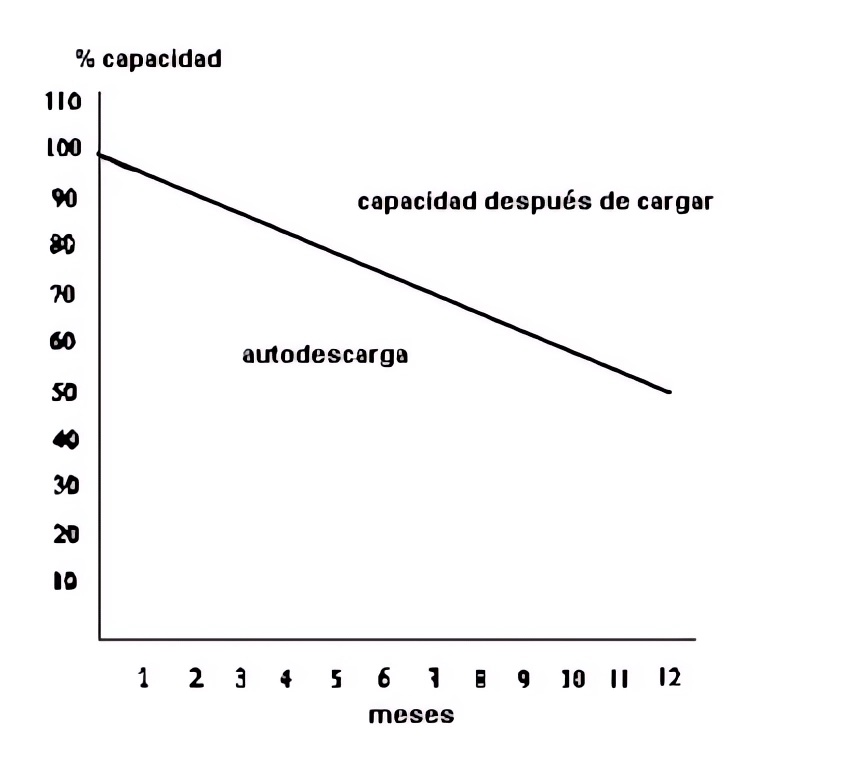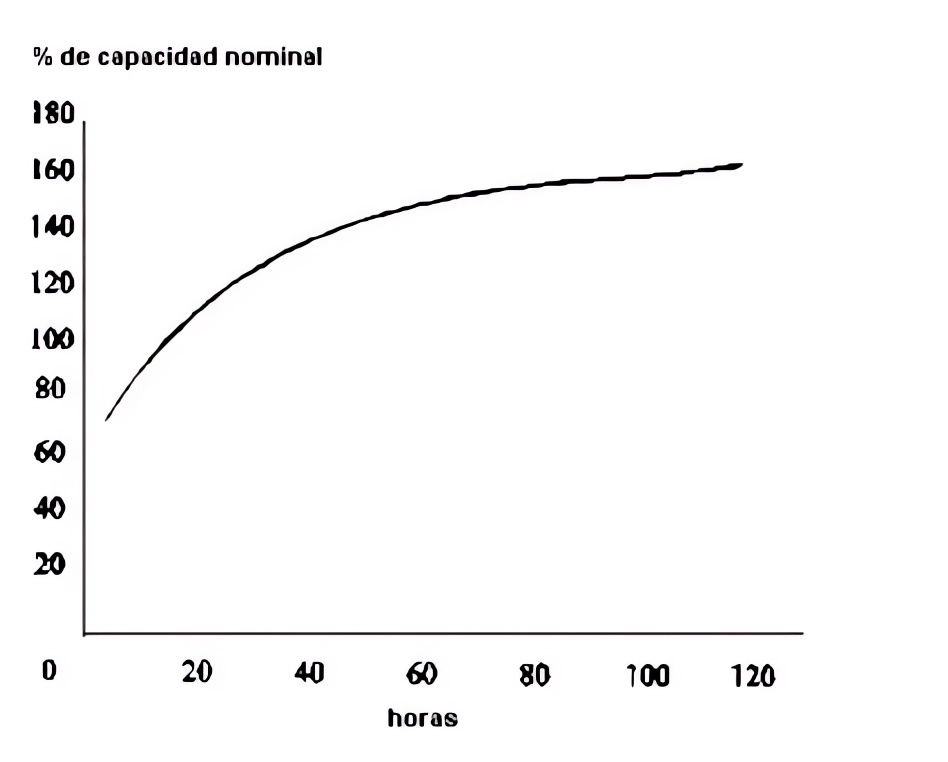Sistemas de Energía DC/AC
Stationary battery: self-discharge, capacity, and performance
The stationary battery is a widely used device in industries and telecommunications. Serving as DC backup in case of power failures and as a component of UPS and other equipment.
This is due to its ability to provide continuous, reliable, and stable power. Its use is limited to fixed locations; they are not portable.
These batteries possess high capacities and offer deep and extended discharge and charge cycles, all while maintaining their long lifespan.
Next, we will explain some of their most important characteristics. Such as self-discharge, performance, and capacity—key factors to consider when selecting these devices for your project. Let’s begin!
Self-discharge in the stationary battery
Self-discharge refers to the energy loss due to the inherent chemical reactions occurring within the battery’s components. This phenomenon occurs when the battery bank is in an open circuit, meaning it is not connected to a load.
Is influenced by temperature, and values are typically provided for an average of 20 to 25°C. Below, we present a graph illustrating how the battery’s capacity decreases over time due to self-discharge. This is the typical behavior for a high-quality battery.

This factor should be considered as additional consumption. In the case of high-quality batteries, the maximum self-discharge rate should be around 0.5% to 1% per day.
For instance, if you have a battery that provides 500 watts, its self-discharge consumption would be approximately 5 watts per day. This is why they need to be recharged on a monthly basis, even when not in use.
Before purchasing, it’s advisable to request the manufacturer to perform a maintenance recharge on the batteries. This ensures they are fully charged at the time of delivery.
Capacity in the stationary battery
Capacity refers to the measurement of stored electrical charge, expressed in Ampere-hours (Ah).
In other words, it represents the energy a stationary battery can deliver under specific conditions of discharge rate, aging, and temperature.
Discharge rate or discharge regime
This factor is designated by the letter «C» followed by a suffix indicating the number of hours for the specified discharge rate. For example, C10 indicates a discharge rate over 10 hours.
It’s important to understand that the capacity of a stationary battery depends on the discharge rate. It increases with slower discharge and decreases with faster discharge. That’s why in the manufacturer’s catalog, the C value should be referenced to the discharge time.
Below is a graph illustrating how battery capacity varies based on the discharge rate.

Temperature
This capacity also heavily depends on temperature. As temperature increases, the speed of chemical processes within the battery accelerates, resulting in an increase in capacity. Conversely, capacity decreases when the temperature drops below 20°C.
Of course, this takes place within certain limits. In general, a temperature of 25°C is when batteries reach 100% of their capacity.
When purchasing a stationary battery, ensure that its capacity graph closely resembles the one shown below.

Aging
The capacity of a stationary battery decreases proportionally with age, starting from the moment of its manufacturing, regardless of whether it’s in service or not. This aging process is accelerated by the cycles of discharge and recharge that the battery undergoes.
Additionally, if stationary batteries are left without recharging for around 5 months, a memory effect can occur that prevents them from regaining their nominal capacity.
Therefore, you should ensure that the manufacturer guarantees that the batteries are fully recharged every 4 or 5 months. Furthermore, you should request the necessary tests, as discussed in our post Determining the state of a stationary battery (Como determinar el estado de una batería estacionaria).
How to calculate the capacity of a battery bank
While the capacity of a battery bank is determined at the time of manufacturing, it’s possible to calculate the capacity you require using the following steps:
1.- Assume a constant discharge current for the entire period, e.g., 200 Amperes.
2.- Determine the duration for which you want the battery to supply energy at a constant current until reaching the cutoff voltage. For instance, 10 hours.
We explain the concept of cutoff voltage in our article Stationary batteries: float voltage, equalization, and cutoff (Baterías estacionarias: voltaje de flotación, ecualización y corte).
3.- Apply the following equation:

Where:
C = required battery capacity in Ah
I = discharge current in Amperes
T = discharge time in hours
Let’s go through an example: If you have equipment that consumes 200 Amperes and you want the batteries to be able to keep it running for 10 hours, then:
C = I x t = 200 A x 10 H = 2000 Ah
Therefore, you would need a battery bank with a capacity of 2000 Ah, configured to provide the appropriate voltage for a 10-hour discharge rate.
It’s important to note that this calculation is an approximation and other variables need to be considered, including the specific discharge table provided by each battery.
Performance in the stationary battery
Performance in a stationary battery refers to the ratio of the energy required to fully charge the battery bank to the energy it can release within a specific time frame. It quantifies the energy losses due to heat generated during the recharging process.
For high-quality stationary batteries, the performance should be above 80%. This parameter is crucial and should be provided by the manufacturer in the product manual. It holds significant importance from an energy and energy storage perspective.
Our Course on designing power systems for telecommunications will provide you with comprehensive information on battery sizing, considering these parameters. To learn more about the course’s content, click here.
If you’re looking for further information about stationary batteries and other AC/DC energy equipment, we invite you to explore the content on energydcac blog. You’ll surely find it very informative and interesting!

